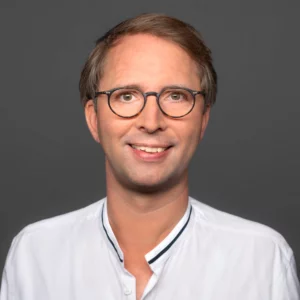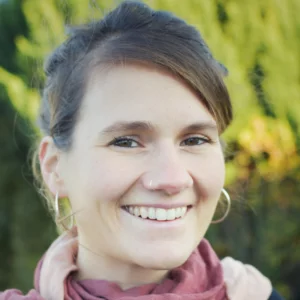The canon of the funding for the independent performing arts at the federal level
Lecture at the symposium "Transformations of the Theatrical Landscape"
Prof. Dr. Julius Heinicke & Johanna Kraft, University of Hildesheim
Exposé
Various institutions fund projects and undertakings in the (independent) performing arts at the federal level. The study examines which cultural policy mandates they fulfill, which thematic priorities they represent, and in what ways they complement each other. It looks at institutions, associations, organizations and event organizers that support and promote projects of the performing arts at the federal level: The Kulturstiftung des Bundes and the Goethe-Institut state that the purpose of their foundation and association is the support of cultural projects relevant for the federal government. The Fonds Darstellende Künste (Fonds), the Bundesverband Freie Darstellende Künste (BFDK) and the Dachverband Tanz Deutschland e.V. (DTD) as well as the National Performance Netz / Joint Adventures and Diehl + Ritter are also involved at the federal level.
Due to the history of cultural funding in Germany and the current challenge for the independent performing arts, the study operates within several areas of tension. With regard to domestic cultural funding, Germany’s constitution, the Basic Law, clearly formulates the responsibility of the states and municipalities in Article 30, while the federal government is responsible for foreign cultural policy (Article 33). This is reaffirmed in the 2018 coalition agreement: "In the spirit of cooperative cultural promotion, we are increasingly coordinating the federal government's cultural funding with the states. Cultural sovereignty lies with the states." There is no denying that the establishment of the Kulturstiftung des Bundes (KSB) in 2002 brought with it some reservations on the part of the states and municipalities, as the latter saw their sovereignty over art and culture threatened. These critical voices seem to have gradually faded, probably also due to the open and multi-stakeholder approach of the Kulturstiftung des Bundes, but the conflict between the states and the federal government has by no means been resolved. Thus, even during the coronavirus pandemic and the resulting state emergency aid, it is evident that while the states and municipalities benefit from the federal programs, they were only partially involved in the decision-making processes, especially in the first phase of the NEUSTART KULTUR program, and are now faced with the challenge that this kind of one-off funding cannot secure the cultural landscape in the long term.
With regard to the topic and content, thus the canon with which this sub-study deals, questions of interpretation or discourse sovereignty also arise: Which topics justify funding on the part of the federal government and appear relevant for this level? In addition to this substantive justification, an artistic-qualitative evaluation stands out again and again. Federal funding is often justified by supra-regional artistic quality, which is determined by the various experts on the juries. This raises the question of which criteria are used to evaluate artistic quality.
In order to be able to discuss the challenges and questions arising at this starting point and to confront the areas of tension at different levels, the study is divided into three parts:
Due to the focus of topics within federal funding and the study’s goal of considering the canon, Part 1 is dedicated to the different contents and topics and outlines them roughly by means of discursive procedures within nationwide political and social debates.
Part 2 takes a closer look at the various institutions and considers the ways in which thematic and content priorities are generated and pursued. The study evaluates websites, position papers and annual reports and supplements these procedures with empirical methods. Several expert interviews were conducted with the institutions’ program officers, members of staff and jury members, and these are also included in this part.
Part 3 summarizes the results of the first two parts, asks about challenges and develops perspectives. The focus is not only on the question of how the thematically diverse canon can be guaranteed in the long term by federal funding, or how it can be made permanent or expanded, but also on the way in which this can be done in the long term and within the interaction of the various actors, and what role the performing arts can play.
Involved
-
Prof. Dr. Julius Heinicke
University of Hildesheim
 © Die Hoffotografen
© Die Hoffotografen
Prof. Dr. Julius Heinicke
University of HildesheimJulius Heinicke is Professor of Cultural Policy and holds the UNESCO Chair "Cultural Policy for the Arts in Development" at the University of Hildesheim. From 2017-2020, he was Professor of Applied Cultural Studies at Coburg University of Applied Sciences in the project "Coburger Weg", which was awarded the Genius Loci Prize of the Stifterverband in 2019. After studying cultural studies and theater, he completed his doctorate at Humboldt University in Berlin on theater and politics in Zimbabwe and then researched and taught for four years at the Institute for Theater Studies at Freie Universität Berlin. Since 2017, he has led the research project "Interfaces between High Culture and Cultural Education" and habilitated in 2019 with the paper " Sorge um das Offene: Verhandlungen von Vielfalt mit und im Theater" (Concern for the Open: Negotiating Diversity with and in Theater), published by Theater der Zeit.
-
Johanna Kraft
University of Hildesheim
 © Henry Cyrenius
© Henry Cyrenius
Johanna Kraft
University of HildesheimJohanna Kraft has been working at LKJ Baden-Württemberg as an education officer in the FSJ Culture since 2020. From 2015 - 2019 she studied the Master of Cultural Education at the University of Hildesheim with a focus on International Cultural Policy and Arts Education.